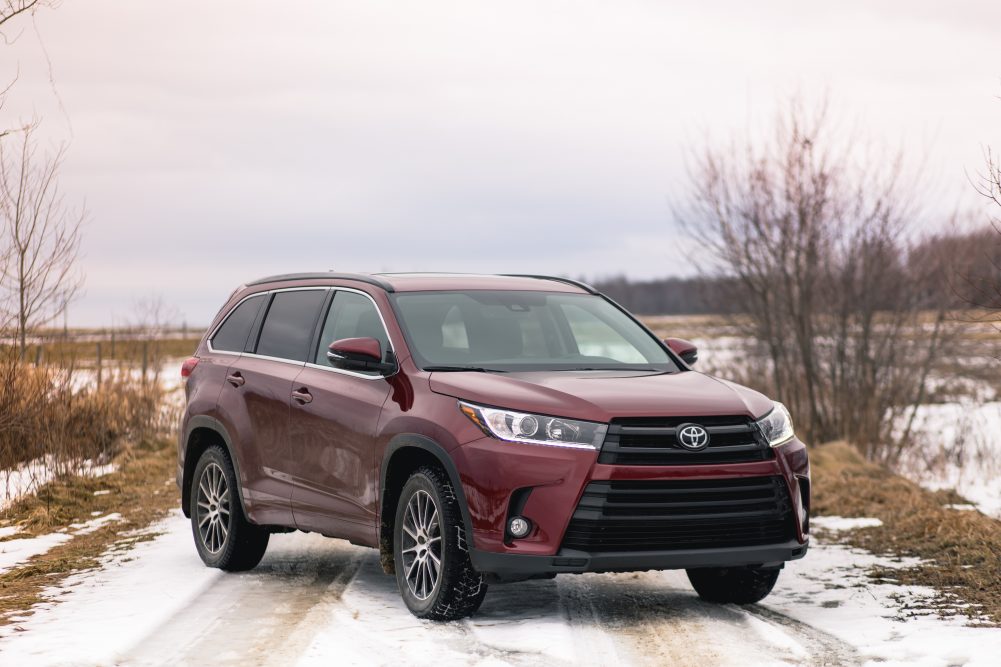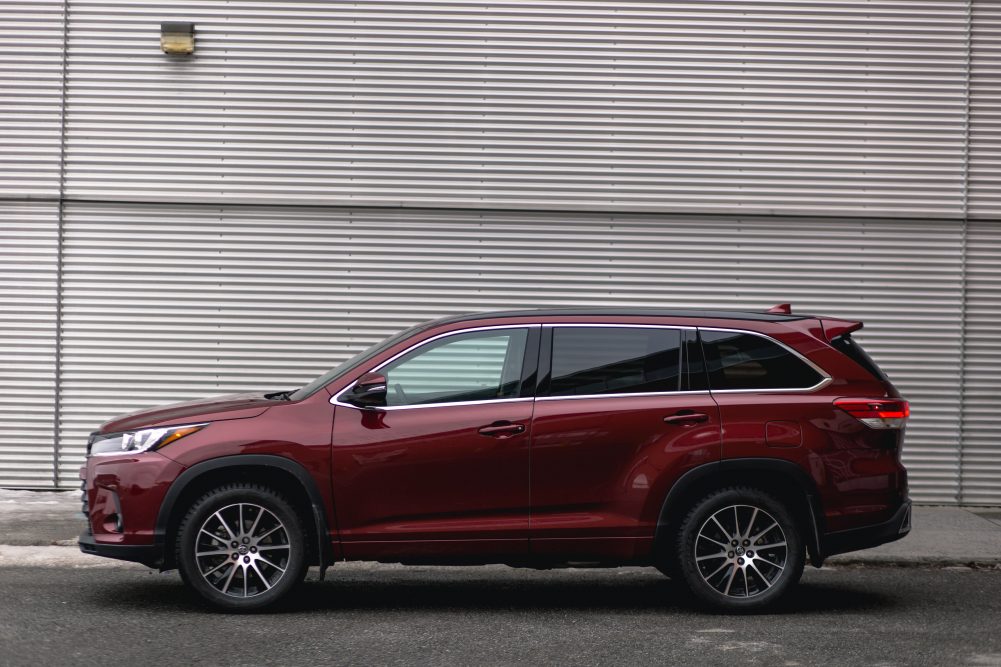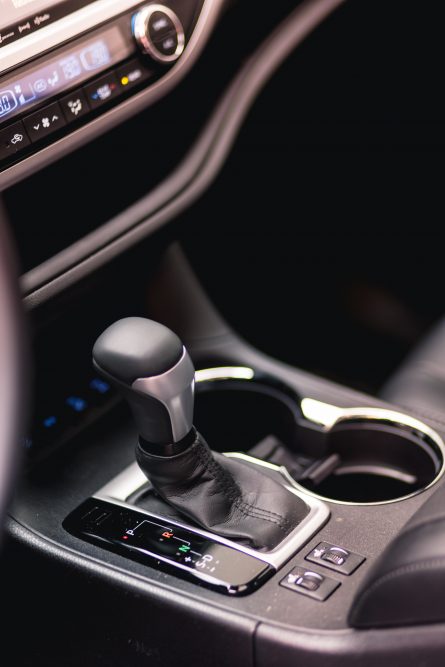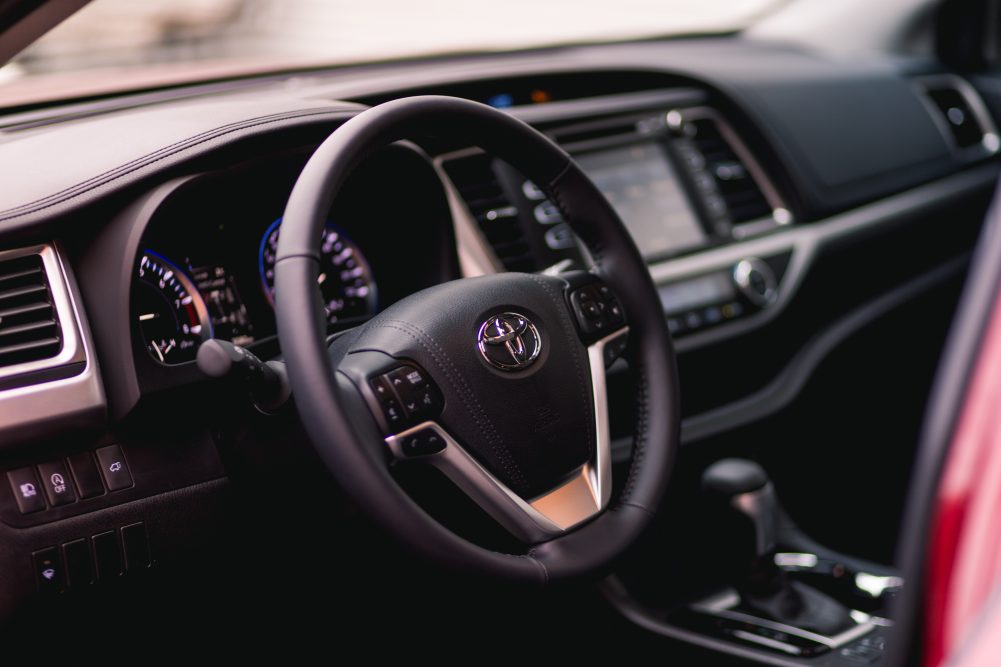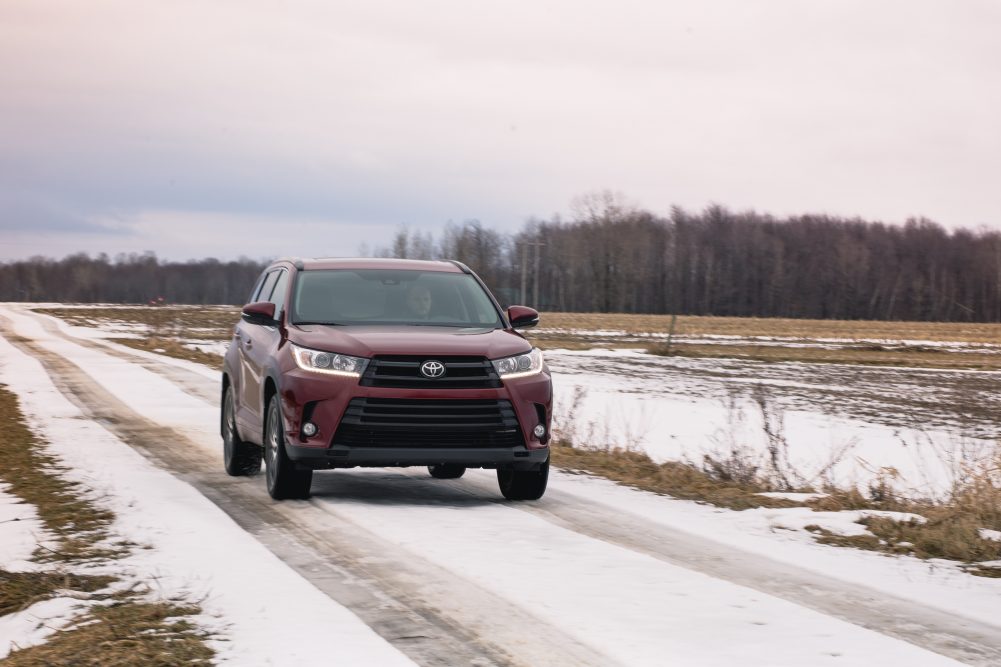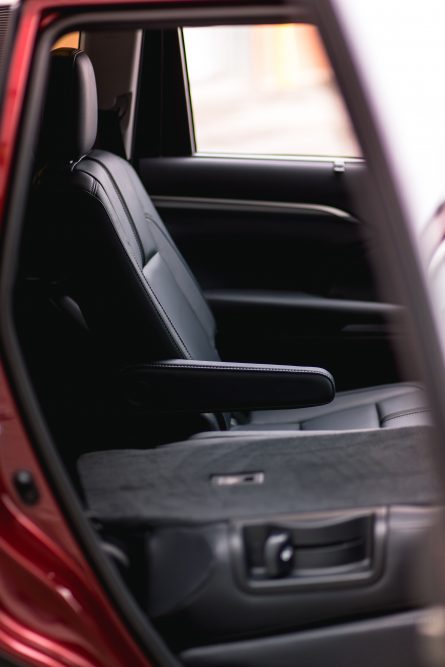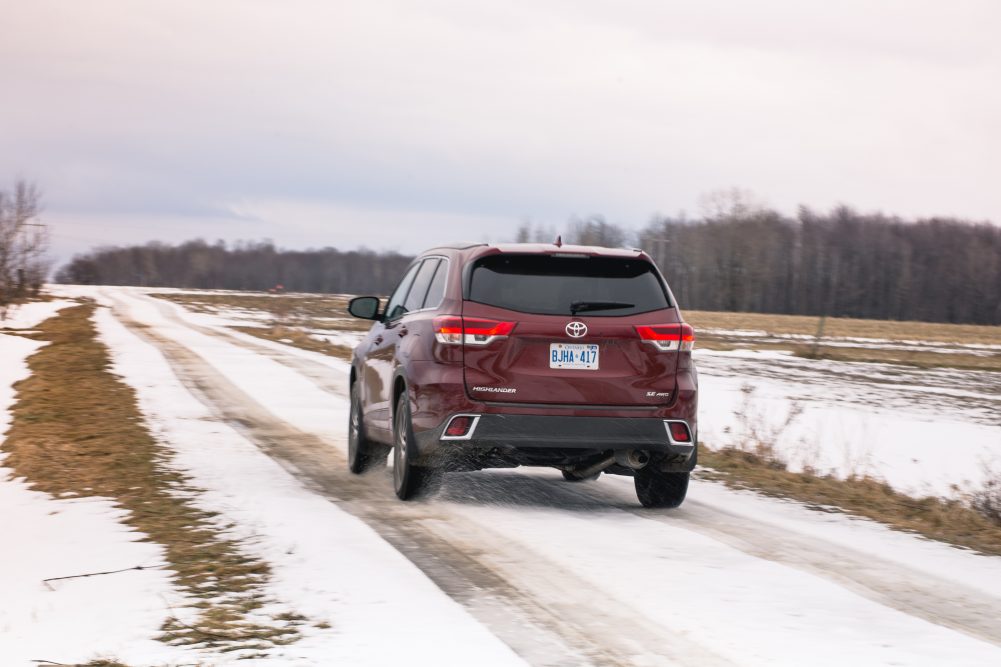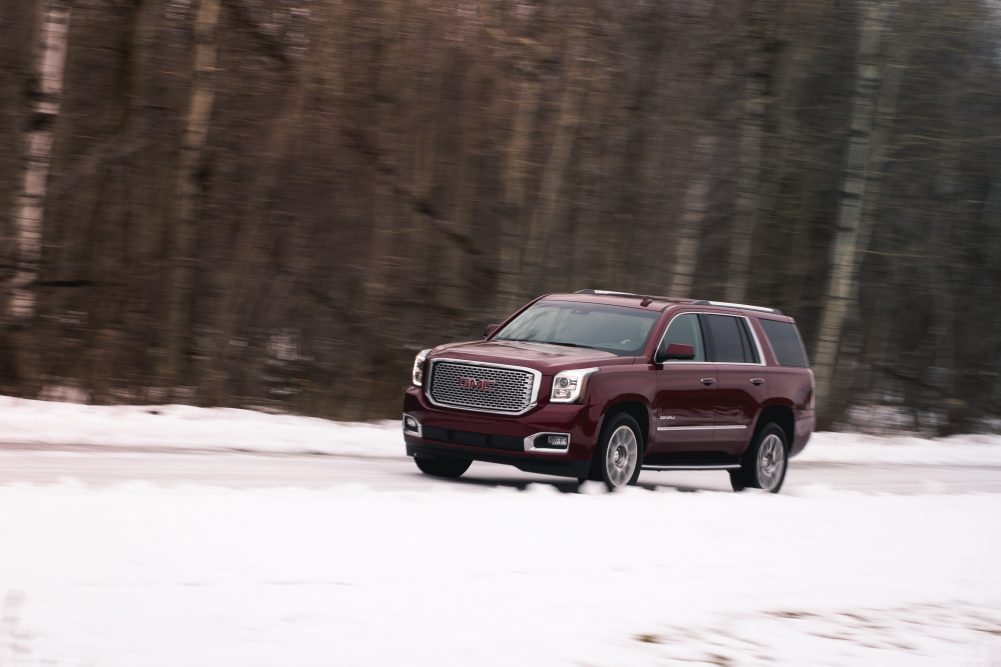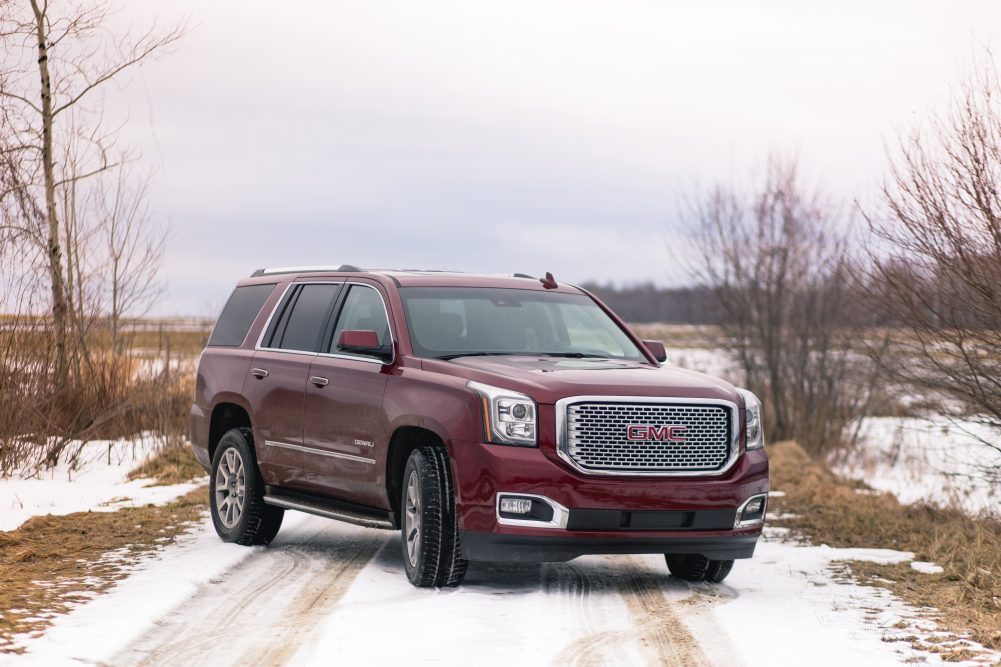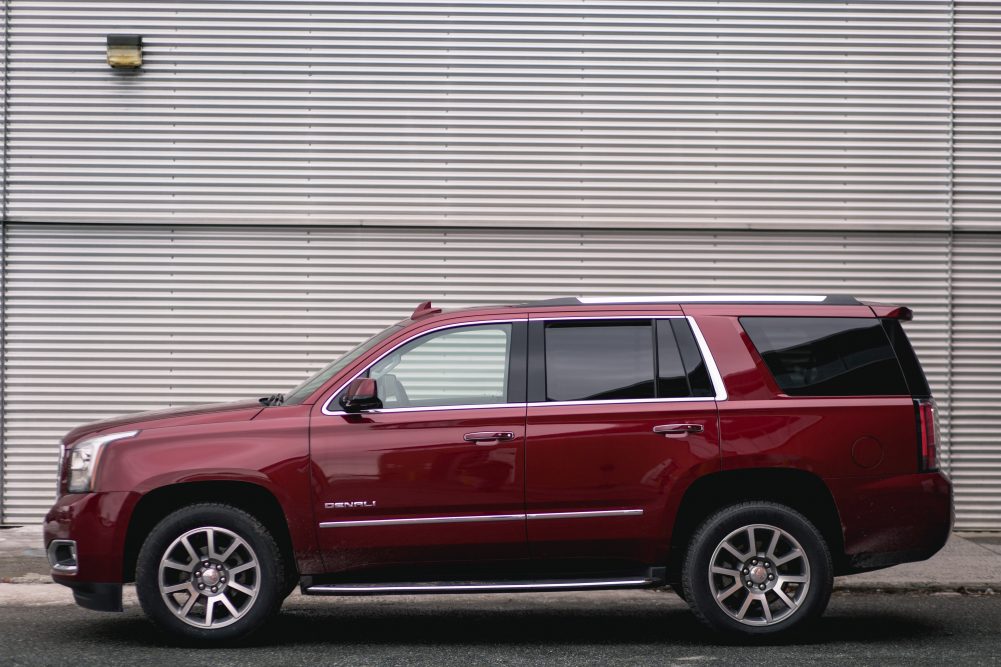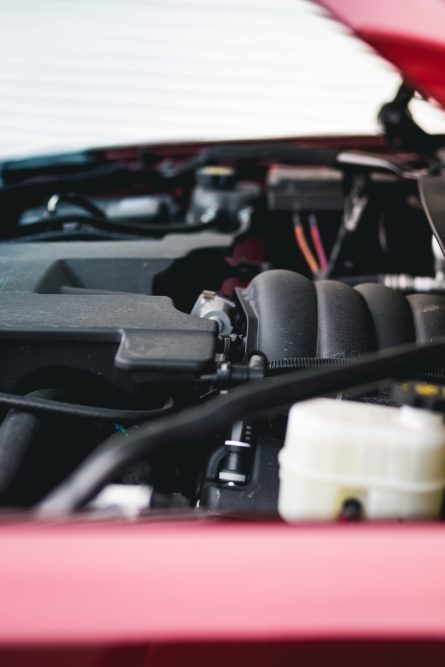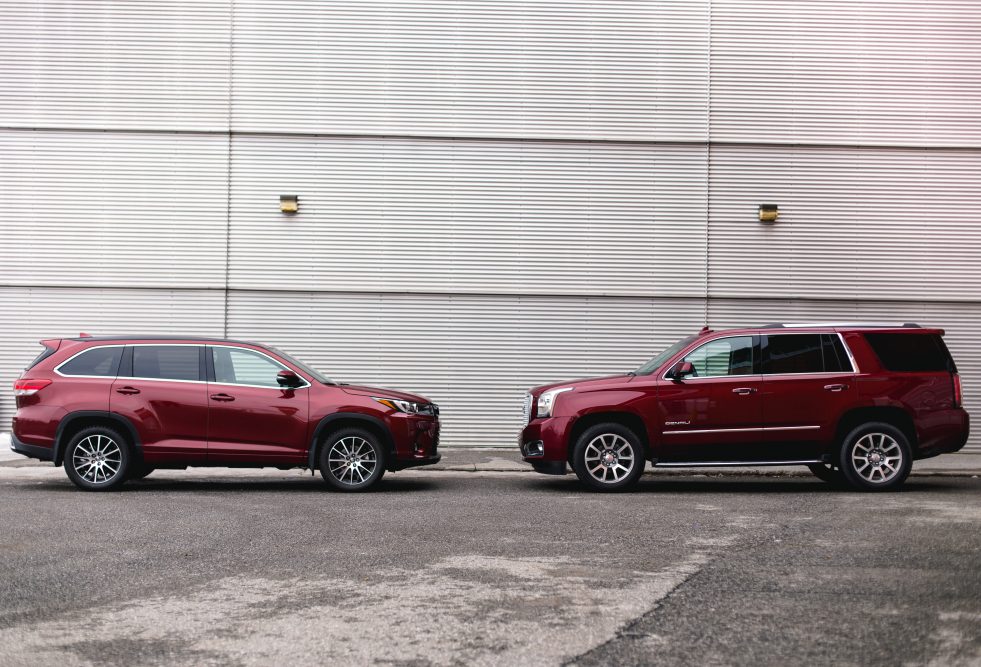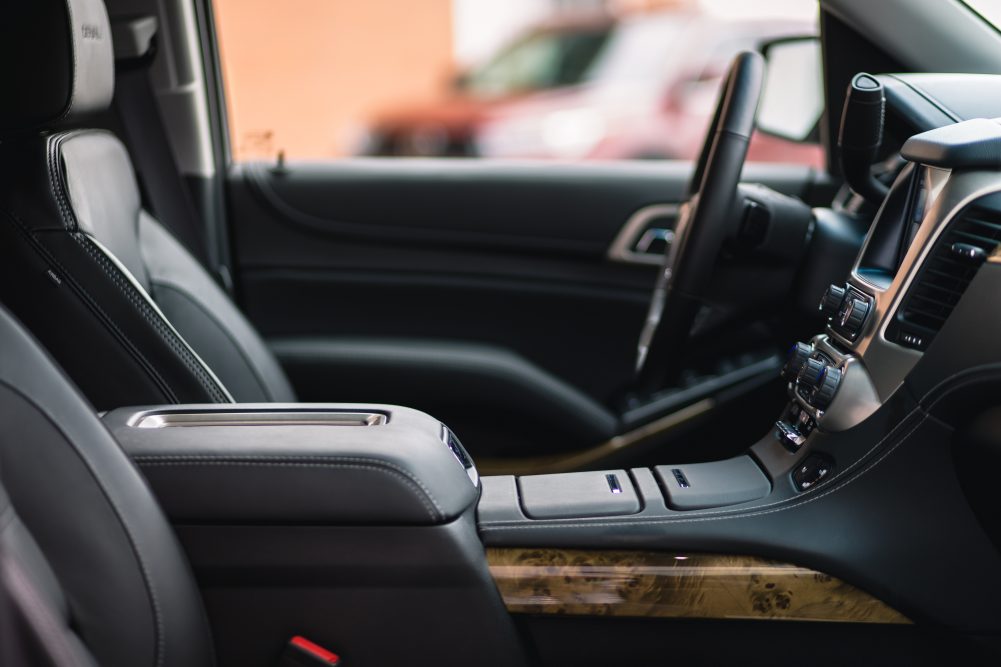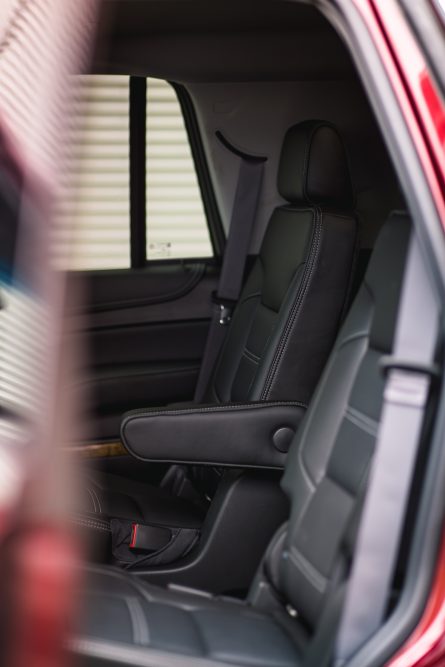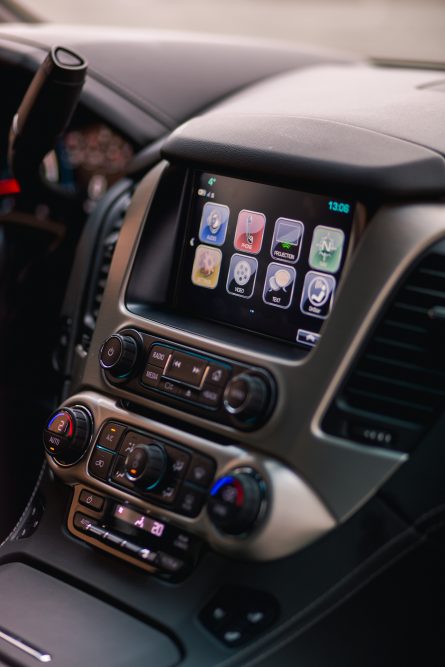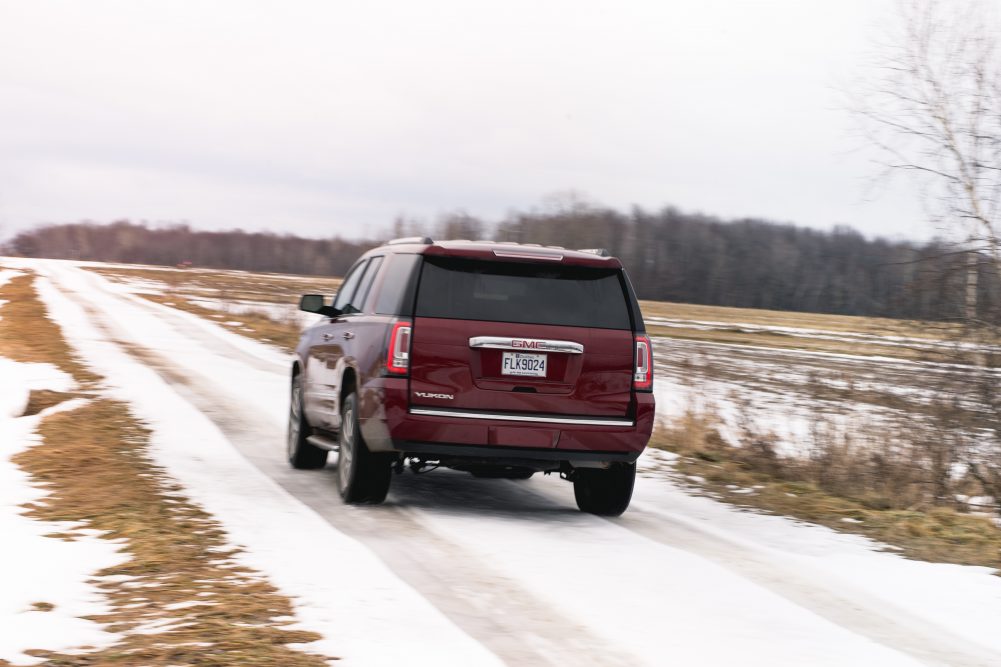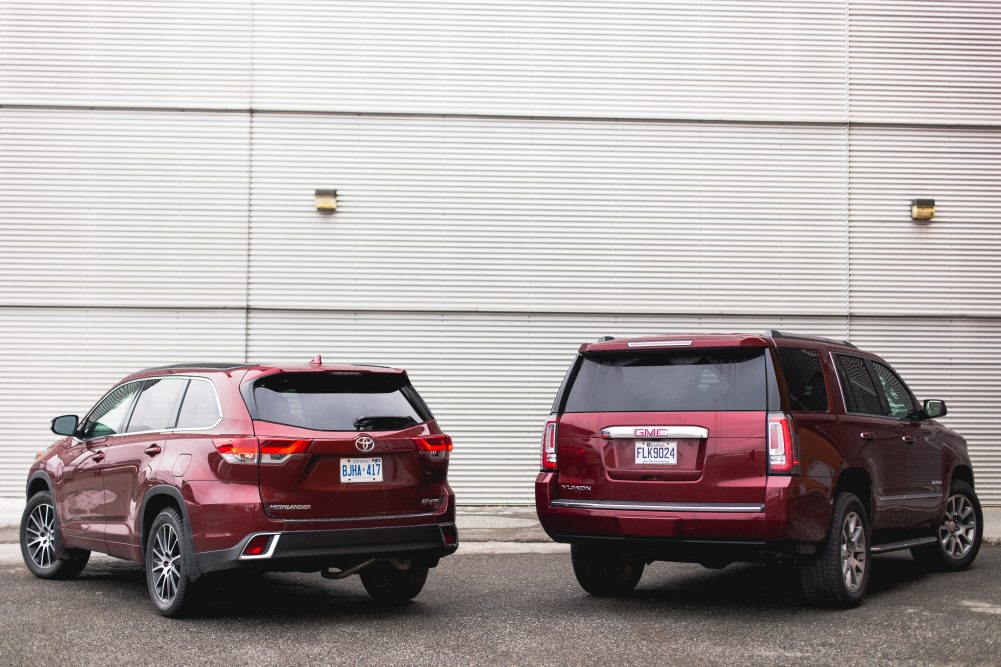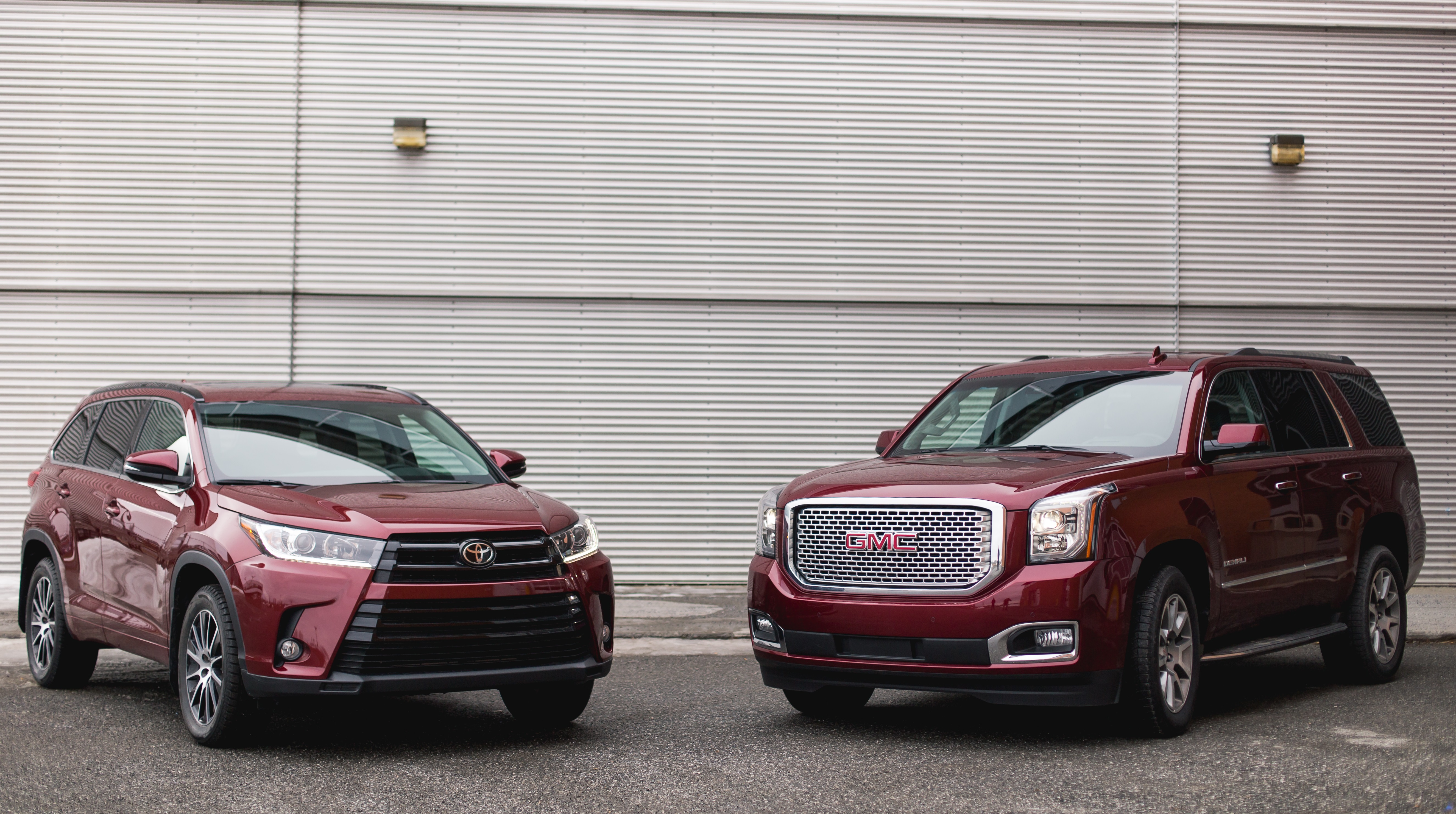
You’re probably wondering what these two are doing in a face-to-face comparison test. I’m well aware that they’re not direct competitors. A GMC Acadia would have made more sense against that Toyota. Don’t worry, I’ve got one of those coming as well. The thing is, Clavey’s Corner is kind of the victim of its own success these days, which is why I ended up with not one, but two full-size SUVs in my driveway. What was I supposed to do, return one of them? Are you kidding? Actually, the simple fact that both these vehicles are painted in the exact same shade of red wasn’t just a hilarious coincidence, but a testament at how similar these two sports utility vehicles are, given their respective differences.
In one corner, the 2017 GMC Yukon Denali: a half-ton, V8-powered, truck-based American brute capable of towing a small house while carrying a family of seven. Its contender, the 2017 Toyota Highlander, is a more, shall we say, mature, car-based, 7, or 8 passenger (depending on trim levels) AWD utility vehicle whose ride quality has more in common with a Lexus LS than an actual truck. Both of these vehicles are fitted with an 8-speed automatic transmission. Both have lockable differentials. And both have a set of captain chairs sitting behind their front seats. But they lie in an entirely different price range, each serving an entirely different purpose.
In a world where consumers are flooded with sports utility vehicles of all shapes and sizes, why not pit these two in a head-to-head match to find out just how much SUV your dollar will buy you in 2017?
2017 Toyota Highlander: Maple Butter
I’ll begin with the Toyota, the one I consider to be the more civilized of the duo. This is isn’t a new Highlander, but rather an update of Toyota’s now familiar family shuttle. Mind you, it’s no secret that 7-passenger SUVs are a hot segment at the moment; well, actually, that’s true of all SUVs. This, of course, places the Highlander in the middle of a sea of stiff competitors in the likes of the Honda Pilot, Nissan Pathfinder, Mazda CX-9, Ford Explorer, Kia Sorento, Hyundai Santa Fe XL, Mitsubishi Outlander, Chevrolet Traverse, that GMC Acadia I mentioned earlier, and the upcoming Volkswagen Atlas.
Holy crap! That’s a shitload of SUVs to choose from.
You can imagine then that a facelift was inevitable for the Highlander. So, what’s new? Well, there’s a new fascia, which now comes with new headlights that are contoured by elegant LEDs and one of the widest grilles to have ever been slapped onto a non-18-wheeler vehicle. No, but seriously, check out that maw.
I like this look though, it’s in tune with the rest of the Toyota truck lineup and gives the Highlander a more rugged appearance compared to the pre-facelifted version, which was too mall-finderish for my tastes. In SE trim, like the one you see here, the Highlander gets the proper sinister treatment thanks to darkened body accents, headlamp surrounds and bitchin’ 19-inch wheels. But the biggest news for this Highlander lies under its hood, where a new and revised 3.5L V6 now resides. Not only does it bring a 25 hp (295 hp) and 15 lb-ft of torque (263 lb-ft) increase to the party, it’s now direct injected and is able to run the Atkinson cycle, which, according to Toyota, significantly improves fuel economy.
I managed to keep the Highlander in the low 11s the entire time I had it.
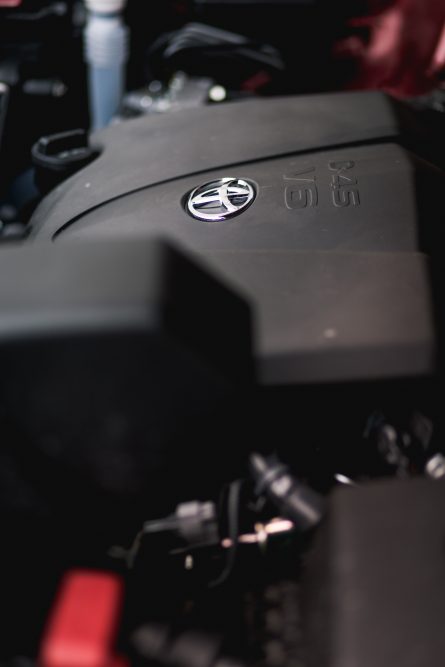
And what a smooth engine this is. It remains one of my favourite V6s out there due to its wide gulps of torque and library-quiet decibels, almost as if it were running on maple butter instead of gasoline. It’s not the most exciting motor to listen to, but in a vehicle that puts the emphasis on comfort and safety like this Highlander, I say this is the 2GR-FKS’s natural habitat. Toyota claims a 0-100 km/h time of 7.6 seconds, and this big guy feels every bit spirited off the line. By no means is the Highlander performance-oriented, but it offers plenty of power to satisfy the duties of the modern nuclear family.
Other mechanical changes in the 2017 Toyota Highlander include an all-new 8-speed automatic transmission. Like the engine, this one is as smooth and delicate as a cloud, with seamless gear changes and appropriate downshifts when you need them the most. At this point I wouldn’t be surprised if a Toyota PR dude came out of nowhere and said: “We purposely wrap each cog in satin to provide that extra layer of smoothness.” Seriously, this is a fantastic transmission – but let it do the shifting for you, because manual mode is simply pointless.
But yeah, what a great utility vehicle this Highlander turned out to be. The whole smooth-as-a-baby’s-butt cheeks theme is carried over in the suspension calibration and chassis as well, where you’d swear this thing was riding on a magic carpet instead of rubber tires and metallic suspension components. The SE trim does get stiffer springs and retuned dampers, but it remains properly serene on the road. The chassis is stiff and feels super solid, with no unwanted quibbles over road imperfections. Inside, it’s the same story; luxury-car quiet, spacious, and comfortable. The interior is fantastically well put together, with soft-touch plastics and faux carbon fibre trim on the door inserts. It’s a good-looking cabin.
I’m personally a big fan of that huge shelf-like storage compartment that spans across the dashboard with integrated pass-throughs to stow and connect your smart phone or other mobile devices. Out back, those fully adjustable leather captain chairs are a treat to spend some time in (a 3-seater bench is available) thanks to an overabundance of leg room. Overall ergonomics are good, but in Toyota fashion, the Highlander is flooded with an array of safety gizmos that can become intrusive, as well as an infotainment interface that gets the job done, but is beginning to show its age compared to the one found in some of its competitors.
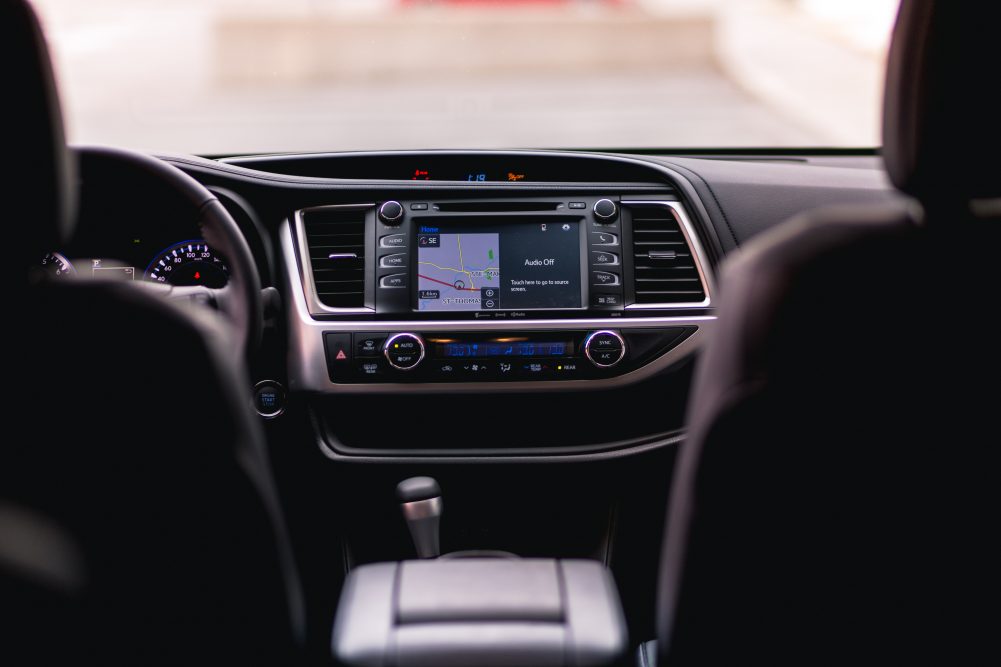
Towing capacity for the 2017 Toyota Highlander is rated at just a tad above 5 000 lb, classic numbers in the car-based SUV category. This, of course, is the Highlander’s weak spot; the fact that it’s not a truck, but a lifted car with AWD. Mind you, 5 000 lb is still a substantial amount, considering this utility vehicle will spend most of its duty going from soccer practices to the nearest Wal-Mart. Base Highlanders come in front-wheel drive, with all-wheel drive being a full-time system, meaning it cannot be disengaged. Lockable differentials are available, however, for added traction in shady off-road situations. Cargo space with all rear seats lowered in the Highlander is rated at 2370 litres. Once all those seats are raised back into their respected positions, the trunk gives way to 390 litres of available space, significantly lower than the Honda Pilot’s 467 litres – the Highlander’s most direct competitor.
Prices for a 2017 Toyota Highlander start at $37 759 for an entry-level LE, front-wheel-drive model. AWD Higlanders start at $40 254. A Hybrid model is available in XLE trim only. That one sells for $52 244. The SE model you see here is an add-on option to the already well-equipped XLE, swapping the conventional three-seat bench for those captain chairs. It sells for $47 849, making the Highlander the obvious bargain of this test.
Final verdict: the 2017 Toyota Highlander is the Lexus-smooth crossover that does everything it was designed to do impeccably well, but that lacks a bit of soul. Also, being a Toyota, it’ll properly last forever.
But I give credit to Toyota for giving their mall finder enough ruggedness to make it feel a bit less like a minivan, a quality that gives it an edge of character over its competitors. Finally, unlike the RAV4 I reviewed on Jalopnik, which felt like Toyota simply threw everything they could at it to generate sales, the Highlander actually feels like a genuine effort, where Toyota engineers and designers seem to have actually cared about what they were building.
The end result is a very capable vehicle that punches way above its weight while delivering classic Toyota virtues of excellent craftsmanship.
2017 GMC Yukon Denali: The Boss Has Arrived
Alright, I have a confession to make, out of the two, if I were to take one home, it would be this one: the 2017 GMC Yukon Denali. The funny part is, this is by no means a better vehicle than the Toyota, but it’s the sheer character of the thing that charmed me. That being said, although this full-size SUV may come through as an unrefined, crude, and irrelevant dinosaur on wheels, it actually boasts impressive engineering feats on its own.
Let’s begin with the obvious stuff – its opulence. Being almost 17 feet long from bumper to bumper, 6 feet tall, and, believe it or not, 6 feet wide from mirror to mirror, the Yukon is, without fail, the current king of the road. I think it’s fair to say that GM currently owns the full-size SUV segment with this Yukon, Tahoe, and Cadillac Escalade each positioned in distinct price brackets. And imagine, this isn’t even the larger Yukon XL. Parking the Yukon next to the Toyota made the already substantially hefty Highlander appear like a toy crossover by comparison. And parking the Yukon, period, proved itself to be quite a workout, with its proximity sensors and vibrating driver’s seat (lol) acting up the entire time we attempted to squeeze it between normal-sized vehicles.
There’s absolutely nothing rational about the Yukon. It’s big, brash, loud, and powerful. And there lies its charm. Riding on a shared platform with GM’s line of half-ton pick-up trucks, the Yukon offers both the comfort and convenience of a 7-passenger utility vehicle, while keeping the endearing traits of a full-size pick-up. This is the old-school way of building an SUV. Which is why I love this thing.
The benefits of using a truck platform are instantly recognizable by the Yukon’s claimed towing capacity of 8100-lb, significantly crushing the Highlander. If you’re a family man that has a trailer-home and a large family to haul around, this is the vehicle you need to buy.
This body-on-frame construction, as well as a solid axle suspension setup out the rear does have its faults. On the road, the Yukon is unfortunately less agile and poised than the unibody Toyota. GM could have replaced the Yukon’s rear suspension components by an independent setup – something Ford does with the Expedition, but cost savings seem to have been the priority here at the expense of ride quality. Tire slap, chassis quibbles, and an overall wobbly ride over road imperfections are the Yukon’s trademark handling characteristics, even with the Denali’s magnetic ride suspension. This translates into an SUV that doesn’t inspire confidence at all behind the wheel, coming through as a rather clumsy giant, especially on slippery winter surfaces.
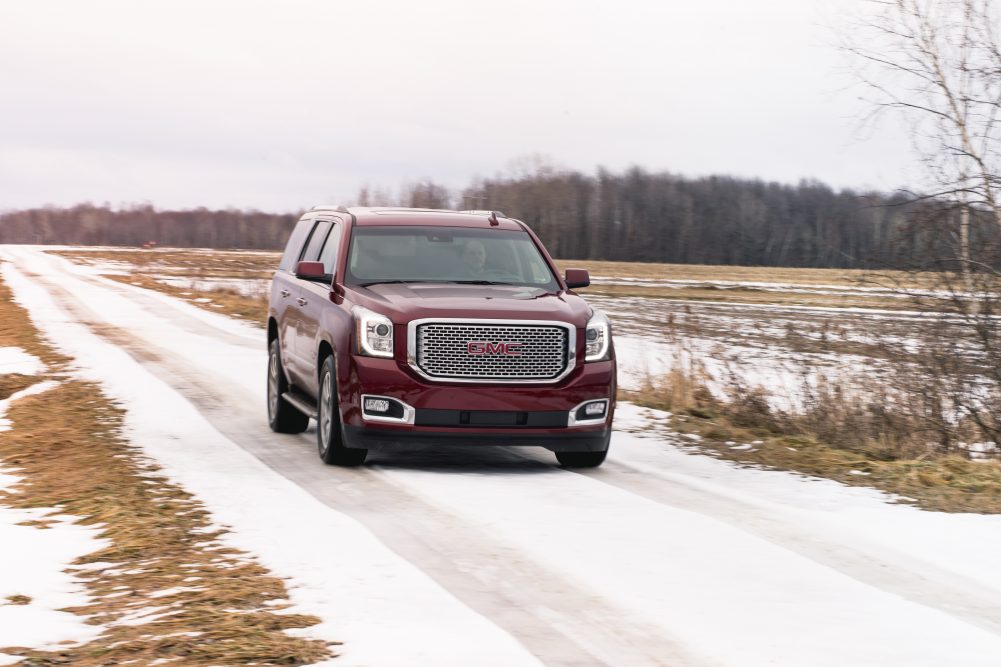
Where the Yukon steals the show though, is under its hood. Nothing spells dominance like a good-old American V8. And in Denali trim, the Yukon doesn’t disappoint. Opting for the $23 000 near Cadillac-like luxury upgrade over the standard Yukon swaps the already potent 355-hp 5.3-liter V-8 for a more substantial 450-hp, 6.2L V8 – essentially a detuned version of the Corvette Stingray’s engine. It’s good for an equally stout 460 lb-ft of torque.
Yeah.
This abundance of available power means that even with a 2 721 kg curb weight, the Yukon sprints from a standstill to 100 km/h in a blisteringly quick 5.8 seconds. That’s not only quicker off the line than a Mini Cooper S, but downright pulverizes the Highlander in a drag race.
Average fuel economy in the Yukon was equally impressive. Thanks to cylinder deactivation, variable valve timing, and GM’s excellent 8-speed automatic, the Yukon pulled surprisingly better numbers than the Toyota, with an average fuel consumption of 10.8 L/100. Of course, that’s when feathering the throttle. I’m not sure things would be the same if we were to hoon both these vehicles all day long long. Still, not bad for a primitive V8.
Being truck-based also means the Yukon is fitted with a real 4×4 system instead of all-wheel drive. This means that the driver can completely disengage the front wheels via a selector located left of the steering wheel. 4×4 high and 4×4 low, complete with fully lockable front and rear differentials, as well as a tow assist feature are also standard on the Denali. Back on that transmission. Although GM’s 8-speed is a smooth operator and works flawlessly in the background while contributing to stellar fuel economy, it’s nowhere near as smooth as the Toyota’s, and occasionally shoved in the gears abruptly during downshifts.
Comfort and sound insulation are a renowned Yukon trait, with massively comfortable leather seats and an abundance of legroom out back – substantially more than the Toyota given the Yukon’s size. As quiet and smooth as this GMC attempts to be on the road, however, it’s no match for Toyota’s Lexus-levels of sophistication. Cargo space is, as expected, where the Yukon wins, with a total of 2681 litres of available room with all seats folded flat. At 433 litres, the Yukon also walks all over the Highlander when its rear seats are raised, which can be electronically operated via a cool little switch in the trunk – because America.
GM’s infotainment system remains a strongpoint in the industry. With easy to find controls, well laid out information and a quick-reacting interface, it’s arguably the best on the market. An abundance of cubbies and storage compartments located around the cabin help putting away cell phones, water bottles, or camera equipment. Unfortunately, the Yukon suffers from some ergonomic quirks, notably an abundance of buttons for controlling everything and a multi-purpose accessory stalk which, due to the fact that the Yukon still uses a column-mounted shifter for its transmission, inherits all of the truck’s front and rear wiper, blinker, headlight, and foglight controls on a single stick, making for a somewhat confusing experience compared to other vehicles that benefit from two stalks to pull it off.
Pricing for the 2017 GMC Yukon starts at $60 600, with the Denali you see here sitting on top of the model range at a very luxury-priced $80 740. This isn’t cheap, especially considering that in this price range, several European luxury carmakers will sell you a much more refined, luxurious and better handling full-size SUV for the same money. Think Audi Q7 or Mercedes-Benz GL. None of them, however, can match GMC’s towing capacity, available power, and downright opulence.
At the end of the day though, it’s the 2017 GMC Yukon Denali’s sense of power behind the wheel and sheer presence on the road that makes it the true winner of this test. I’ve said it before, and I will say it again, the greatest vehicles have never been the best-built ones, but rather the imperfect ones that transcend character and personality either through design, conception, or driving characteristics.
As far as making a statement goes, I’m sorry, but no other vehicle on the road, except maybe its Cadillac cousin, achieves this better than the GMC Yukon Denali – even if it’s the automotive equivalent of Donald Trump.
Clavey’s Corner is located in Montreal, Quebec, Canada. Prices and trim levels discussed in this article reflect the Canadian car market.
Special thanks: GM Canada / Toyota Canada
Photography: Appearance
Join the Tribe
Contact the author: [email protected]



